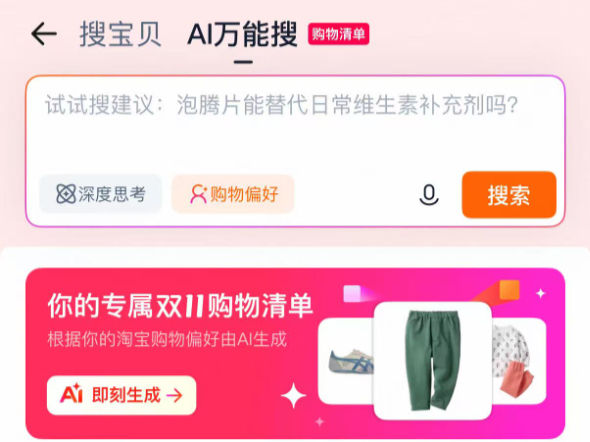The Aesthetics of Economic Upturn: Why China's Youth Are Nostalgic for a More Hopeful Era
- wanyixu
- 8月12日
- 讀畢需時 4 分鐘

A recent social media trend in China has taken the internet by storm: “经济上行的美” — the aesthetics of economic upturn. On Xiaohongshu (RED), one of China’s most influential lifestyle platforms, the hashtag has garnered over 52.3 million views and 161.9k posts. But beyond the numbers lies a deeper cultural signal: this is not just a fashion revival, but an emotional flashpoint.
Just as many Japanese nostalgically look back on the Shōwa era, and many Americans idealize the post-war golden age, young Chinese are now collectively longing for the late 2000s and early 2010s - a time of economic optimism, personal freedom, and upward momentum.

Screenshot of #经济上行的美 hashtag page on Xiaohongshu (Source: Xiaohongshu)

"What is 经济上行的美"? (Source: Xiaohongshu)
From Cargo Pants to Collective Memory:
How It All Started
The trend began among a group of Chinese netizens who studied abroad in the late 2000s and early 2010s (古早留子). Now in their 30s, they are posting throwback photos of themselves from that era:
✨ Cargo pants and metallic tops
🧢 Edgy haircuts and oversized sunglasses
🎒Memories from their first backpacking trip or internship abroad
Their captions reveal more than just aesthetic nostalgia. They recall a time when individuality thrived, when they could roam the world on a student budget, when the future felt full of promise, and when they believed that hard work would always lead to upward mobility.
Many posts juxtapose their carefree youth with today’s economic reality. Some share photos of designer bags or gadgets they bought during the height of China’s consumerism boom, comparing it with their current “消费降级” (consumption downgrade) lifestyle - more cautious, more restrained, and often more anxious.
Comments are emotionally charged:
“That was when I believed hard work could change my life.”
“I used to chase dreams, now I just chase deadlines.”
“I miss the energy we had back then.”

Users post their photos from 10 years ago (Source: Xiaohongshu)
Check out our previous article The Emotional Appeal of Chinese Dreamcore to understand more about the nostalgic cultural phenomenon in China.
Why This Aesthetic Resonates Now
While the early 2000s fashion comeback might look like just another TikTok or RED aesthetic, the emotional undercurrent runs far deeper. For many millennials and Gen Zs in China, the period from 2000 to 2012 represents a kind of personal and national “golden age.” These were their teenage or early adult years, coinciding with China’s rapid GDP growth, growing global presence, and rising middle class.
Back then, people were bold: bold with colors, with ambition, with purchases. You didn’t worry about spending, because you believed you’d make more in the future. Consumption wasn’t guilt-ridden. It was empowering.
Now, the tone has shifted. Today’s consumers are entering or well into middle age. They have families, mortgages, and aging parents to support. Many feel emotionally and financially “stuck.” In contrast to the earlier “气血感” (vitality, flow, youth) and "活人感" (liveliness, vibrancy), the present is marked by “内卷” (involution) - a term that captures the exhausting pressure to work harder without clear returns.
This longing for “economic upturn aesthetics” is not simply a desire to relive youth—it is a collective yearning for a time when life felt fair, hopeful, and emotionally expansive.

Users comment about how they felt vibrant 10 years ago and exhausted today (Source: Xiaohongshu)
What It Means for Brands:
This trend has powerful implications for marketers, especially those working with legacy brands, nostalgia aesthetics, or emotional storytelling. Here’s what brands should take away:
1️⃣Don’t treat nostalgia as a costume.
Consumers are not just looking to recreate a Y2K look. They are trying to reconnect with a past emotional state, a sense of agency, optimism, and personal expression. The key is to understand the emotional anchor, not just the visual cue.
2️⃣In a post-consumerist world, emotional consumption still matters.
Today’s mainstream trend may be toward pragmatism and conscious spending, but that doesn’t mean consumers have abandoned emotional buying. On the contrary, there’s a growing hunger for emotional resonance, especially when brands tap into collective memory in an authentic, non-opportunistic way.
Brands can use this opportunity to explore themes like:
● What does freedom feel like again?
● What small signals of hope can we give?
● How can consumption be tied to identity, not just utility?
3️⃣Emotional value beats product function.
If the 2010s were about excess and access, the 2020s are about emotional clarity. Brands that help people feel again, whether through design, community, or storytelling, will be the ones that build longer-term loyalty.
“经济上行的美” is not simply a reflection of past trends - it’s a window into the current emotional life of China’s young and middle-aged consumers. Behind the metallic makeup and cargo pants is a deep desire to feel alive, seen, and hopeful again.
This is a generation that once believed in the promise of progress, and is now searching for ways to reconnect with that belief, even if only through a nostalgic image.
For brands, the challenge isn’t to copy the past, it’s to help build a future that feels just as worth dreaming about.
💬 Curious about more cultural signals shaping China’s Gen Z consumers? Reach out — we’re tracking them every day.
Double V Consulting is a marketing consultancy specialized in female consumer goods brands. We have been helping overseas brands navigate the complexities of the Chinese market since 2017. We specialize in creating strategies that resonate with Chinese female consumers, leveraging deep market insights and cultural understanding.
If you're interested in learning more about how we can assist your brand in understanding and connecting with Chinese consumers, don't hesitate to reach out by click the HERE



留言